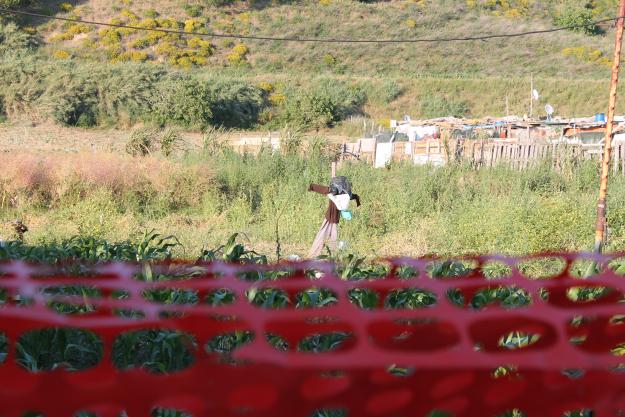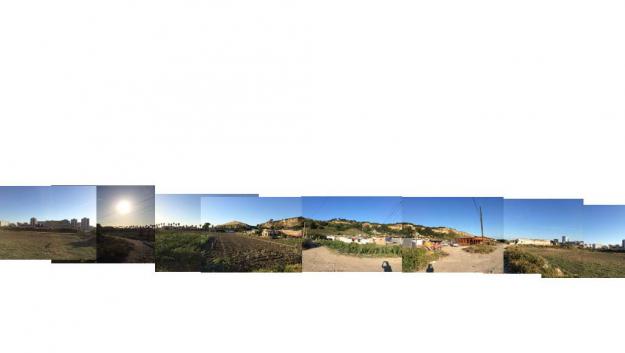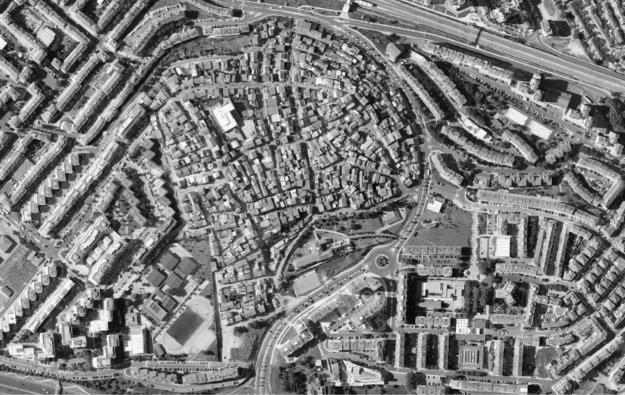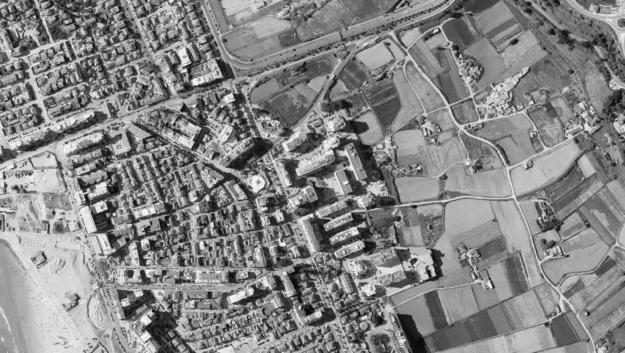Lisbon InBetween
Lisbon InBetween
The assignment of the course is to explore the site specific conditions of informel settlements and the adjacent neighbourhoods within the metropolitan region of Lisbon, with a specific focus on the „inbetween conditions“ – the connections of the informel settlements to the city.
Introduction: DO 08.10.2015 15:00 studio2
Schedule:
The course will start with a two days workshop in Innsbruck (around October 19th-23rd) in order to prepare the on site explorations. We will discuss and develop different field research methods (e.g. observation, tracking), including pro-active research tools (e.g. participative mappings) for the different sites.
The one week field research will take place in the middle of November. The on site collected datas will be elobareted using different techniques (text, information graphics, mappings, photo, film, etc.).
Exhibition visit: „SÍ O NO – Urban-Think Tank's Architecture of Provocation“, Architekturmuseum der TU München (October)
Expenses: ca. 350,- (flight + accommodation)
Introduction:
According to the United Nations currently 1 billion people live in informel settlements and without any appropriate reactions in the near future the number will be doubled. The rapid spread of informal settlements in major cities and megalopolises is considered as one of the greatest future challenges. They appear wherever regulation mechanisms are absent and express individual and in official ways to find solutions for the shortage of housing. Informal settlements are utterly self-organised and materialized examples of bottom-up processes and thus generally viewed as the opposite to top-down planning. The dichotomy of either approaches has a long history. Throughout the 20th century top-down planning has been questioned at various times. From the work of Team X, to the confrontation of Jane Jacobs and Robert Moses, the writings of Henri Lefebvre, as well as the numerous current forms of tactical urbanism. Questions arise whether the existing operational, political and design strategies can cope with the challenges of an intensifying “crisis of planetary urbanisation” (Harvey 2014). Both, informel settlements as well as different forms of tatical urbanism, evolve from an urban development based on neoconservative politics and economies, indicating a lack of the prevailing top-down instruments in meeting people’s needs.
Bridging the gap between bottom-up and top-down urban planning remains a future assignment, or to quote Teddy Cruz, it’s about closing “the gap between the abstraction of large-scale planing logics and the specifity of everyday practice.“
There are numerous situations within the contemporary urban landscape where both conditions touch. Sometimes in the most extreme way, as for example in Sao Paulo, where favelas and the most exclusive gated communities are situated right next to each other. In contrast to Sao Paulo Lisbon is hardly associated with informal growth, as are Western European Cities in general. But looking at the current waves of migration this perception will inevitably shift, and thus questions how to deal with these arrival cities (Saunders 2010) will come to the fore.
The informel settlements in and around Lisbon emerged in the 1970s. Next to a rural-to-urban portuguese migration, post-colonial immigrants from Angola, Mozambique or Cape Verde, accelerated the expansion up to a peak in the late 1980s with around 150 000 – 200 000 people living in informel settlements. Clearance and rehousing programms starting in the early 90s meanwhile decreased the numbers.
Growth and transformation of informel settlements are related to global processes of urbanisation, nevertheless site-specific differences occur looking at the cases in Lisbon (morphology, infrastructure, formalisation, ect.). This also refers to the distinction of either forms of city production, processes of transformation as well as the interrelations between the formal and informal city.
At large we will try to understand and unveil the specific local conditions. We will look at the different urban patterns and will zoom in to engage with the nature of everyday spatial practice, including the identification of local actors as well as unofficial modes of exchange. We will try to understand the phenomenology of a site, in order to reveal the qualitative and quantitative attributes. Which are the material and immaterial specificities of a territory? Economic, social and cultural dynamics are related to spatial configurations. Is the local production of space related to the diverse cultural backgrounds of the inhabitants? Which are the connections between the formal and informal city from the everyday perspective – which forms of inbetween spaces emerge? Furthermore we will test pro-active research tools, as for example participative mappings. Pro-active research is aiming to provoke change already within the research rather than just observing a situation.















